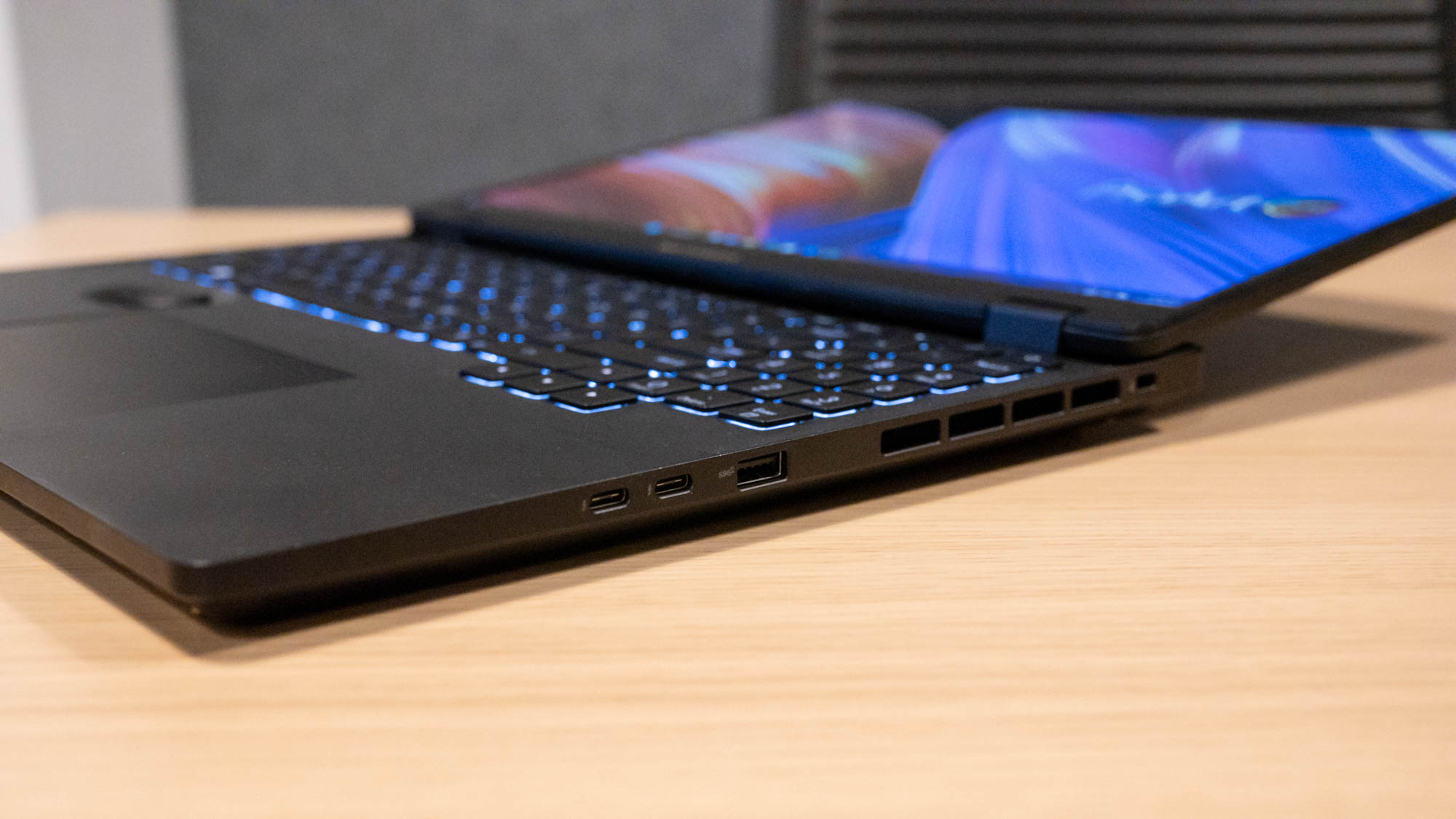Early Verdict
The Asus ProArt Studiobook 16 3D OLED laptop boasts a 3D display and impressive specs. It could be the ultimate laptop for creatives and even gamers.
Pros
- +
Impressive 3D display
- +
Sleek, all-black design
- +
Lots of ports
Cons
- -
Too heavy to carry around
Why you can trust Tom's Guide
The Asus ProArt Studiobook 16 3D OLED could be the ultimate laptop for professional and aspiring artists. The biggest selling point here is the glasses-free 3D display that’s ideal for folks who work on 3D projects or who simply enjoy watching 3D content. This laptop also packs a 13th gen Intel Core GPU and an Nvidia RTX 40-series GPU, which should provide it with plenty of power for both creative projects and gaming.
I got to check out the Asus ProArt Studiobook 16 3D OLED a number of weeks ago prior to CES 2023. Though my time with the device was brief, I found it very impressive despite not being a creative sort myself. This machine has the potential to end up on our best laptops list.
Below, I’ll give you my hands-on impressions of this upcoming Asus laptop.
Asus ProArt Studiobook 16 3D OLED: Price and configuration
Asus hasn't yet said much about when the ProArt Studiobook 16 3D OLED will launch or how much it will cost. For the moment, all we know is that the company plans to release the laptop sometime in the second quarter of 2023.
Asus ProArt Studiobook 16 3D OLED: Design
The ProArt Studiobook 16 3D is a fairly large laptop. Though you can carry it around if you need to, it’s clear this laptop was meant to be kept on a desk. But it should look great wherever you situate it, thanks to its fetching Mineral Black finish.
Along the top of the display, you’ll find a long camera that capture's your eyes' movements (more on that in a bit). There’s also a rotary dial underneath the left side of the keyboard that can be used in creative apps (like the Adobe suite) to do things like switch between tools or zoom in and out.
Besides those two components, the ProArt Studiobook 16 3D looks like a standard laptop. This isn’t a negative since this device exists to help you create visual masterpieces.
Get instant access to breaking news, the hottest reviews, great deals and helpful tips.

The laptop’s design allows the screen to lie flat, which offers a viewing angle of up to 180 degrees. I doubt I’d ever use this feature myself, but I can see how it could be handy for creatives.
There are numerous ports across the laptop. This includes two Thunderbolt 4/USB-C, two USB-A, one HDMI 2.1, an SD card slot, an ethernet port, a headphone jack and a security lock.
Asus ProArt Studiobook 16 3D OLED: Display
The 3D-capable display is this laptop’s most distinctive feature.
Asus claims this is the “world’s first 16-inch 3.2K 120Hz 3D OLED 16:10 display.” That’s a lot of caveats to be certain. The company also says the display covers 100% of the DCI-P3 color gamut and has a Delta-E value of less than 2 (the closer to 0, the better). We’d have to benchmark the display ourselves to see what it’s truly capable of. But during my time with the laptop, I found the panel bright and vibrant.

I generally think 3D is a gimmick, but I have to admit that this laptop’s 3D display was pretty impressive. I believe this is due to the fact that the 3D camera tracks the movement of your eyes instead of your head. Because of that, the 3D image stayed consistent regardless of where I looked. Even when I moved my head or moved the laptop to different angles, the 3D image moved as if it were a physical object. It’s hard to describe, but trust me when I say that this is super impressive stuff.
With the flick of a switch, you can convert 2D images to 3D in real-time, and vice versa. I tried this feature myself and found it worked as well as advertised. I’m not an artist, but I can see how it would be beneficial to see your work in both 2D and 3D.
Asus ProArt Studiobook 16 3D OLED: Performance
I wasn’t able to test the ProArt Studiobook 16 3D’s performance, but given its components, it should be a robust machine for both art projects and gaming. It packs a 13th gen Intel Core Raptor Lake CPU, an RTX 40-series GPU, up to 64GB of RAM and up to 8TB of SSD storage. There are also two slots for M.2 SSD cards in case you need additional storage.
The laptop also includes Asus’ IceCool Pro thermal technology that serves to maintain consistent performance when you’re doing resource-intensive tasks.
Asus ProArt Studiobook 16 3D OLED: Outlook
I'm not an artist but I appreciate what the Asus ProArt Studiobook 16 3D OLED has to offer. As I said up top, the 3D display is very impressive and actually works. Thanks to its beefy components, it should serve the needs of artists and gamers alike.
If you want to see what other laptops were announced at CES 2023, be sure to check out our Alienware m18 hands-on review and HP Dragonfly Pro hands-on review.

Tony is a computing writer at Tom’s Guide covering laptops, tablets, Windows, and iOS. During his off-hours, Tony enjoys reading comic books, playing video games, reading speculative fiction novels, and spending too much time on X/Twitter. His non-nerdy pursuits involve attending Hard Rock/Heavy Metal concerts and going to NYC bars with friends and colleagues. His work has appeared in publications such as Laptop Mag, PC Mag, and various independent gaming sites.

